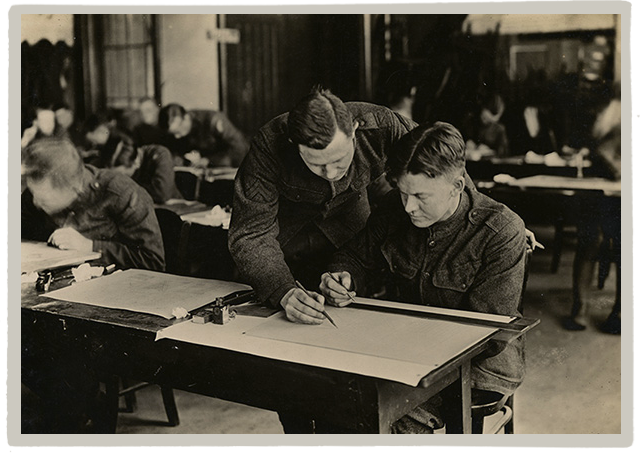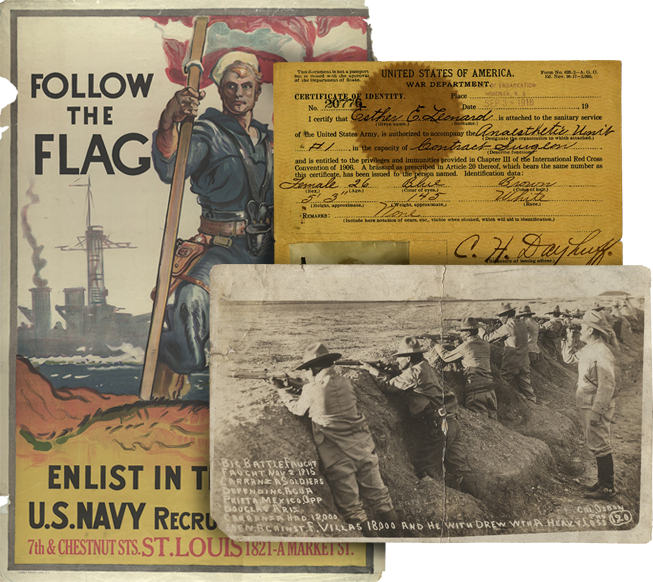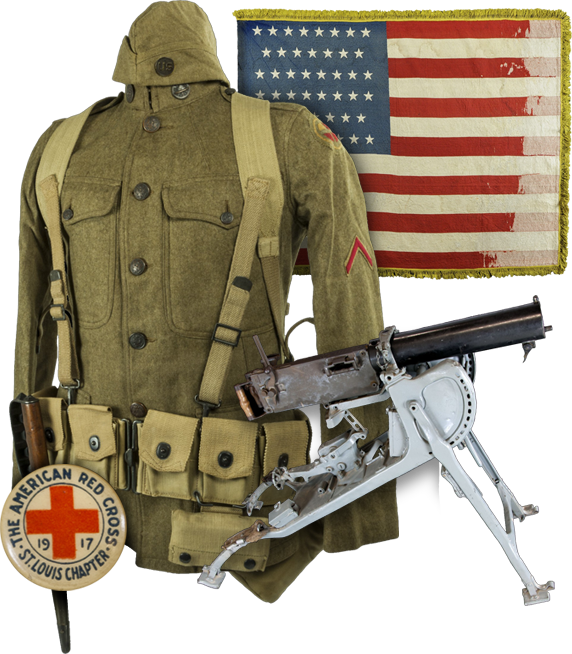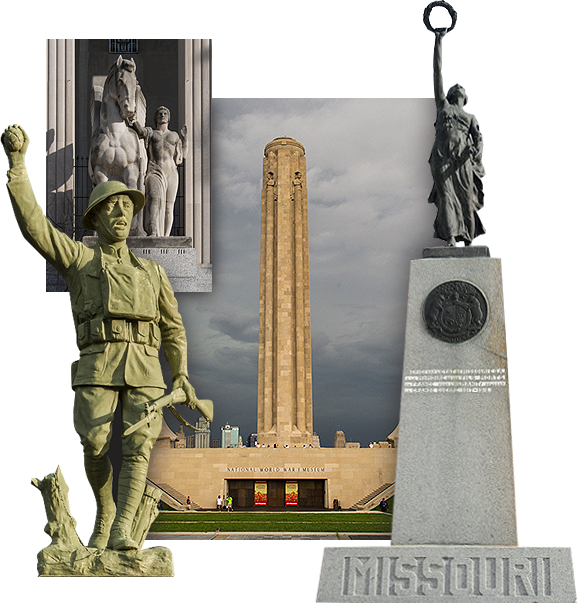"The March into Germany 56 Years Ago" - November 11, 1976

Transcript
[November 11, 1976] Charles S. Stevenson 6510 State Line Shawnee Mission, Kansas The March Into Germany 56 Years Ago by Kansas and Missouri Veterans In World War I (Suitable for Veterans

Transcript
[page 2] As the Belgian border was crossed flags were everywhere - Belgian, English, Italian, French and American - and large banners and arches with inscriptions in French and English, saying

Transcript
[page 3] in the home in which he was billeted. After watching the father strike the girl, several times, the American and his friend went after the man and subdued him. Had he resisted, he would have been as would have returning German soldiers, subjected to a severe penalty. The regulations governing the conduct of the civil population were simple and moderate and in striking contrast to the harsh rules imposed by the German military authorities upon the in habitants of Belgium and France during their occupation. Every person above the age of twelve was required to provide himself with a card of identity, containing a photograph of the individual and a certificate of his identity by his burgomaster. Most of what the Americans had to do was to see that such regulations were enforced. The Regulation of German acceptance to armistice regulations was entrusted to our troops. One unpopular one required that all dramshops be closed except during a few hours of the afternoon and early evening. The sale of any intoxicant except beer and light wines was prohibited. All weapons of every sort were required to be turned over to the military authorities who collection them in depots and guarded them. Assembling of the people was forbidden without permission, which, however, was always granted on request for a meeting for any lawful purpose, especially for political meetings of all parties during the period before the election of delegates to the National Assembly and the Prussian Diet. Returning German soldiers were required to remove their uniform within four days of their return. Ass persons in uniform were required to salute American officers and all persons were required to uncover and stand at attention when Army band played the American National anthem. Any interference with the troops or having in possession American Army stores or property was the occasion for sharp punishment. Sanitary measures were enforced, such as the isolation of contagious diseases, the marking of polluted water sources, and compulsory treatment by our own veterinarians of all horses and mules and owned by civilians within the area in order

Transcript
[page 4 ] to eradicate the mage, which was prevalent. Manure piles, those then obtrusive features of every village in Continental Europe, were required to be neatly kept and covered with pine boughs. All reported prostitutes were examined and women found with venereal diseases were arrested and sent to Trier for treatment in German hospitals. The troops of Company A were billeted in nearly 20 towns and villages where they occupied spare beds in private homes. No German man was allowed to occupy a bed if an [American] soldier was not housed. At first the Germans attempted to fool the American authorities by saying they had no available beds. A few cases of misrepresentation found the German man involved sawing wood for a night or two. Word soon got around and all available beds were being used by Americans. One Kansas Citian was housed in the upper bedroom of a fine Jewish couple who had two 30-year old daughters. The accommodations included twin beds, an electric heater, china pitcher, wash bowl and chamber pot - one to each of us. The folks were most friendly and a warm friendship developed. In another town, the same Kansas Citian was billeted with two elderly German sisters. When pain from a dry socket got severe, hot tea and hot packs on his jaw were placed on his jaw by the German woman, the only person left in that German family.

Transcript
As the entry into German land began, one very noticeable thing was evident: not a single German road, home or had even as much as a bullet mark on them. It was a great contrast to what took place in World War II where the same towns were blasted and shattered almost to dust by Allied troops enroute to the Rhine River.
Details
| Title | "The March into Germany 56 Years Ago" - November 11, 1976 |
| Creator | Stevenson, Charles |
| Source | Stevenson, Charles. The March into Germany 56 Years Ago. 11 November 1976. Stevenson, Charles S. Collection. 1979.24; 1982.202. National World War I Museum, Kansas City, Missouri. |
| Description | Charles Stevenson wrote this memoir of the 314th Engineers of the Selective Service 89th Division's march through France, Belgium, and Luxemburg. Stevenson enlisted in Kansas City, Missouri and became attached to Company A, 314th Engineers at Camp Funston, Kansas. Stevenson was shipped overseas on June 12, 1918 where he remained for the duration of the war. He arrived back in the United States on May 26, 1919. |
| Subject LCSH | World War, 1914-1918--Military life--United States; United States. Army. Engineer Combat Battalion, 314th; United States. Army. Infantry Division, 89th |
| Subject Local | WWI; World War I |
| Site Accession Number | 1979.24; 1982.202 |
| Contributing Institution | National World War I Museum and Memorial |
| Copy Request | Transmission or reproduction of items on these pages beyond that allowed by fair use requires the written permission of the National World War I Museum and Memorial: (816) 888-8100. |
| Rights | The text and images contained in this collection are intended for research and educational use only. Duplication of any of these images for commercial use without express written consent is expressly prohibited. |
| Date Original | November 11, 1976 |
| Language | English |



